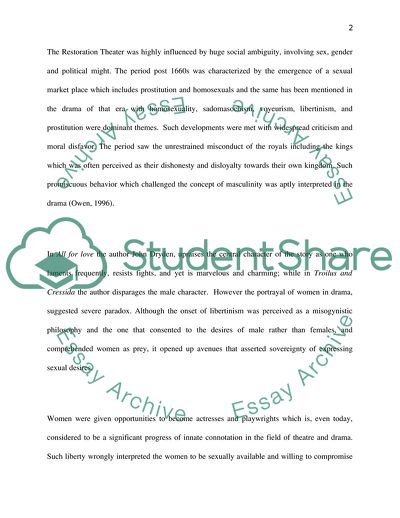Cite this document
(Restoration Theatre Case Study Example | Topics and Well Written Essays - 1750 words, n.d.)
Restoration Theatre Case Study Example | Topics and Well Written Essays - 1750 words. Retrieved from https://studentshare.org/performing-arts/1717660-sexual-politics-in-restoration-drama
Restoration Theatre Case Study Example | Topics and Well Written Essays - 1750 words. Retrieved from https://studentshare.org/performing-arts/1717660-sexual-politics-in-restoration-drama
(Restoration Theatre Case Study Example | Topics and Well Written Essays - 1750 Words)
Restoration Theatre Case Study Example | Topics and Well Written Essays - 1750 Words. https://studentshare.org/performing-arts/1717660-sexual-politics-in-restoration-drama.
Restoration Theatre Case Study Example | Topics and Well Written Essays - 1750 Words. https://studentshare.org/performing-arts/1717660-sexual-politics-in-restoration-drama.
“Restoration Theatre Case Study Example | Topics and Well Written Essays - 1750 Words”. https://studentshare.org/performing-arts/1717660-sexual-politics-in-restoration-drama.


